| Published
on 11
Dec
2009 |
All rights reserved.
|
|
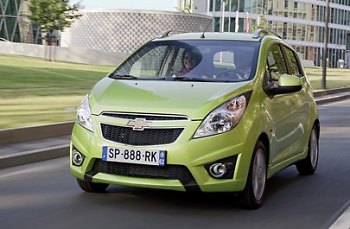 |
GM's second global car appears as
Daewoo or Chevrolet, as pictured here.
|
Nick
Reilly has just been
named as the CEO of Opel / Vauxhall. Before this appointment, he spent
7 years in Korea, founding GM Daewoo and growing it to be an
indispensable part of General Motors. Today, GM Daewoo not only becomes
a high-volume production center of GM but also its R&D center for
small to compact cars. Its first global responsibility was Chevrolet
Cruze / Daewoo Lacetti. The second is this one, Chevrolet Spark /
Daewoo Matiz II.
In Korea, the new Matiz is called "Matiz Creative" in order to
distinguish from the first generation car still being sold there –
although this situation is not expected to be long. You might remember
the original Matiz. It had little to remember except its tasteful
design by Giugiaro. The new Matiz is also a design-led product, but
this time more aggressive, more in-your-face. While it might has more
showroom appeal to young customers, it is likely to age more quickly
than the old car which lasted for 11 years. The car has a
volume-optimized profile similar to Suzuki Splash, but it is a little
narrower and lower. Compare with the old Matiz, however, it is wider
and longer by nearly 100 mm, and taller by 30 mm. This result in a
spacious cabin truly capable of seating 4 adults.
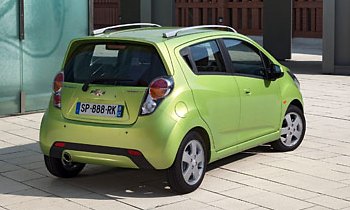 |
New Matiz is a design-led product...
|
However, the interior gives us a mixed
impression. Functionally, it has nothing to offend. Visually, it tries
hard to be funky – in particular the single gauge instrument pod and a
small LCD information display – but the center console and glovebox
look outdated. The plastics are also quite cheap, failing to match its
arch-rival Hyundai i10, let alone the more matured European minicars.
The plasticky faux alloy trim and the dark ambience did nothing to
raise its visual quality. GM Daewoo has yet to manage quality vs price
as well as its rivals. A second production site at India might explain
why it did not choose classier materials, but isn't Hyundai i10 also
produced in India ?
Like other small cars, the Matiz is easy to drive around town due to
its compact size and lightweight. It suspension is clearly tuned for
comfort, which is not much of a surprise. Understeer comes early, but
body roll is well managed. There is some NVH issues on the
preproduction car when it rides over large bumps, but considering the
chassis comprises of 66% high-strength steel and 16%
ultra-high-strength steel, a little more acoustic materials and
suspension fine tuning will easily solve the problem.
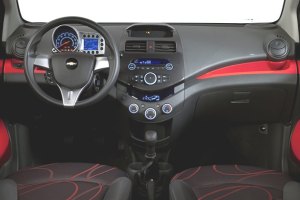 |
|
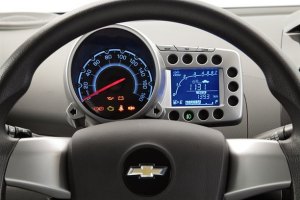 |
Quality is missing here...
|
The Matiz / Spark offer two small
engines to satisfy the basic needs: a 70hp 1.0-liter 16-valve and a
82hp 1.2-liter 16-valve, both equipped with port deactivation to
increase exhaust gas recirculation and save fuel. In town, the smaller
engine has just enough pull to keep up with the traffic. The larger
engine has more mid-range punch, but it screams noisily approaching
5000 rpm, leading to poor refinement on highway. Daewoo's manual
gearbox also lacks a satisfying gearshift, which is vague and
imprecise.
The new Matiz / Spark look promising from its exterior design and
packaging, but in fact it is an average product like its predecessor.
While it fulfills the basic needs for 4-people transportation, it
offers no more refinement or sparkle than the class average. I wonder
why Chevrolet calls it Spark.
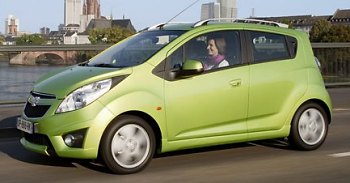 |
A Spark whose driving lacks sparkle...
|
|
Verdict:    |
| Published
on 25
Jul
2013 |
All rights reserved.
|
|
Spark EV
|
|
California launched the
controversial ZEV (Zero Emission Vehicle) legislation as early as 1990.
After countless of arguments, bargaining and revisions, the regulation
is finally coming into force. By model year 2015, large manufacturers
like GM, Ford, Chrysler, Toyota, Nissan and Honda have to sell at least
3 percent ZEVs in the state (though there are ways to lower the limit
by selling other clean vehicles like plug-in hybrids). For GM, it means
about 3,000 units a year. The definition of ZEV is either full electric
vehicles or hydrogen fuel cell vehicles. Since fuel cell is not matured
enough to be commercialized yet, the only way to fulfill the regulation
is to build electric cars. This is why we saw many electric small cars
launched lately, such as Mini E, Smart Fortwo ED, Fiat 500e, Toyota iQ
EV, Honda Fit EV, Ford Focus Electric and this, Chevrolet Spark EV.
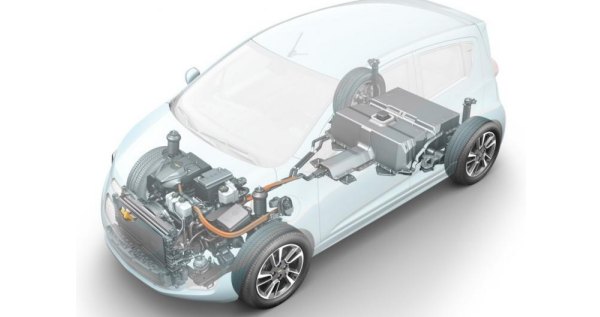
|
GM's take on the EV conversion is much the same as its
rivals. The Spark is chosen as the basis because it is small yet roomy
enough to accommodate the large battery pack. This 21 kWh lithium-ion
battery occupies the space under the rear seat and between the rear
wheels, something made possible by the compact torsion-beam rear
suspension. Weighing 254 kg, it actually helps lowering the car's
center of gravity and improving the front-to-rear balance to 52:48. Up
front, the petrol engine and gearbox are replaced with a
permanent-magnet electric motor good for 140 hp and an astonishing 400
lbft of torque, and a single-speed step-down gearbox. The power
electronics and inverter are also located under the bonnet. Inevitably,
the regular car's engine-driven air-con, heating and servo pump have to
be replaced with electrified units, while the new LCD instrument is
designed to display EV info like battery level and expected range. The
suspensions are stiffened to cope with the extra weight. The brakes are
upgraded to all-round discs. The rear tires are widened to reflect the
altered weight distribution. Nothing really surprises.
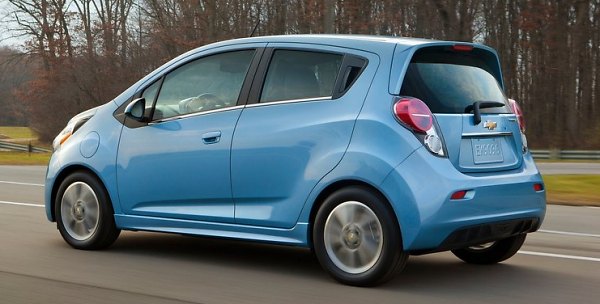
|
Outside, the EV has its main grille covered, and the lower
grille now incorporates automatic shutter to reduce drag at high speed.
Speaking of drag, extra aero kits like skirts, underbody panels and air
deflectors installed fore of each wheel reduce its Cd to 0.325, but
even that figure is hardly remarkable these days.
On the road, the combination of strong torque and 140 horsepower
successfully overcomes the extra weight of 300 kg, allowing the Spark
EV to accelerate briskly. 0-60 mph time is quoted at a remarkable 7.6
seconds, far faster than the standard car's 11.2. To conserve battery,
the speed limiter cuts in at 90 mph, but that is more than enough for
anyone wanting to buy a green car. In corners, the EV also shows better
balance than the standard car, although its low-rolling resistance
tires struggle to cope with the strong torque if you are more
aggressive on throttle. The steering is slightly more responsive and,
surprisingly, free of torque steer, although communication is still
lacking. Not so good is the braking, which is ruined by the non-linear
transition between regenerative to mechanical braking.
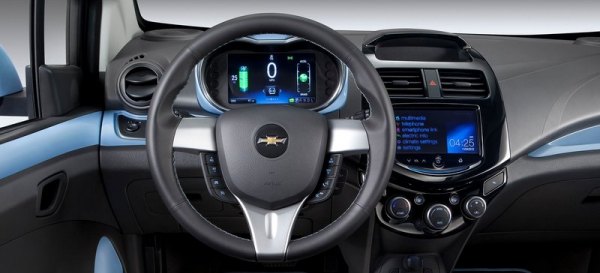
|
The most important question is: is the Spark EV practical
enough to compete with conventional cars? With a quoted range of 82
miles (132 km), it should be sufficient for intra-city use, but it
won't be as versatile as conventional cars until one day when fast
charging stations are widely available across the country – by then
this car might have retired already. However, apart from range and
charging time, the rest of the package is highly practical. The cabin
is just as roomy as the standard car. The boot is shallower and its
capacity is reduced by 25 percent, but you can fold the rear seat back
to expand the load bay. More concerning is pricing. In the USA, federal
government offers an incentive of US$7500 while California pays another
$2500. This reduces the starting price to $17500. Still, it is $5000
more expensive than the petrol Spark. Moreover, even with this premium
the EV is going to make a loss for GM. If not because of the California
ZEV regulation, this car would not have been produced. That is why the
car will not be sold in most other states of America. There is still a
long long road to go before EV can become popular.
|
Verdict:    |
|